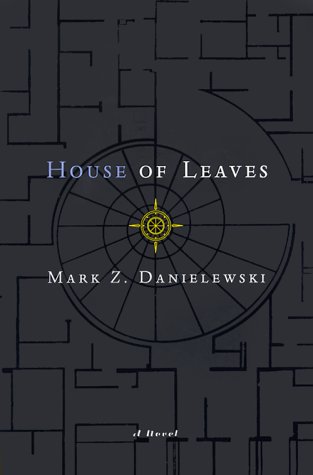All Nonfiction
- Bullying
- Books
- Academic
- Author Interviews
- Celebrity interviews
- College Articles
- College Essays
- Educator of the Year
- Heroes
- Interviews
- Memoir
- Personal Experience
- Sports
- Travel & Culture
All Opinions
- Bullying
- Current Events / Politics
- Discrimination
- Drugs / Alcohol / Smoking
- Entertainment / Celebrities
- Environment
- Love / Relationships
- Movies / Music / TV
- Pop Culture / Trends
- School / College
- Social Issues / Civics
- Spirituality / Religion
- Sports / Hobbies
All Hot Topics
- Bullying
- Community Service
- Environment
- Health
- Letters to the Editor
- Pride & Prejudice
- What Matters
- Back
Summer Guide
- Program Links
- Program Reviews
- Back
College Guide
- College Links
- College Reviews
- College Essays
- College Articles
- Back
House of Leaves by Mark Z. Danielewski
“House of Leaves”, Mark Z. Danielewski’s 2000 debut has as many detractors as it does cult devotees. It would seem as though this self-styled horror story with a postmodern bent polarizes reader opinion. How is it that no one seems to have neutral feelings for this book?
I picked up “House of Leaves” on recommendation. The name came up in conversation somewhere between David Foster Wallace and Steven King. This is as appropriate a comparison as any, Danielewski adopting Wallace’s use of footnotes/endnotes and stringing along a plot with King-like suspense. However, I don’t think likening “House of Leaves” to anything that’s ever been done before does the work justice. The novel subverts the form of the traditional “literary” or “academic” piece, posing as a genre fiction. However, I’ve never seen a genre book that quotes Jacques Derrida so extensively or explores the field of semiotics so playfully. The author cites quotes from books that don’t exist and provides transcripts of interviews that never happened. “House of Leaves” is very much a product of the information age, providing the reader with three appendixes, an index, and an impenetrable system of citation. To some, this might lend the book a feel of faux-authenticity. Others might read this as a spoof on dogmatic, pedantic literature.
“House of Leaves” tells the story of the house on Ash Tree Lane, a building bigger on the inside than it is on the out. Another narrative takes place in the book’s footnotes, a meta-narrative in which the “House of Leaves” text is found and published by a fictional editor. This intricate framing device allows the text a meta-awareness that is at once interesting and fun. Text appears colored, stricken from the original draft, and laid out in innovative formats that closely mirror what is happening within the story. When characters are being chased, the reader is left to read at a pace of a sentence a page. When claustrophobia sets in, Danielewski fills even the margins with script. The author’s use of typography to relay a holistic feeling to the audience is revolutionary and unlike anything I’ve ever read.
All told, I really enjoyed “House of Leaves,” though I can see why some decry Danielewski’s craft as pretentious and inaccessible. Perhaps the work was self-consciously pretentious and inaccessible, as much a parody of literary criticism as it is a suspense tale. It is safe to say that nothing quite like this has ever been done. “House of Leaves” may prove to be the thinking man’s new Amityville Horror. If nothing else, it is a fresh, new stab at maximalism. Thomas Pynchon would do well to take note.
Similar Articles
JOIN THE DISCUSSION
This article has 0 comments.

